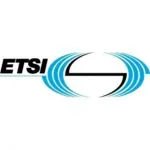

ETSI’s Emergency Communication Special Committee has recently released two major specifications, ETSI TS 103 479- for NG112, the next generation of European emergency services and ETSI TS 103 625, for the specific Advanced Mobile Location function. AML is already implemented in 22 countries worldwide following the publication of the first ETSI technical report TR 103 393.
ETSI TS 103 479 specifies the core elements of the architecture for network-independent access to emergency services, enabling interoperability of implementation for the Next Generation access to emergency services. Next Generation 112 (NG112) architecture enables multimedia communications which are not possible on the current phone-based system. This will benefit citizens in emergency situations as well as emergency responders, network providers, and other stakeholders.
The specified core elements support centralized mapping and routing functions for current and future emergency communications and operational requirements. The functional elements of the network comprise security measures and the routing capability to forward a call/communication received from any concentration point based on the caller’s location to the relevant emergency services call centre.
The Advanced Mobile Location (AML) technology is essential to provide the most accurate location of the caller. The phone’s location capabilities (making use of GNSS, WIFI and cellular network information) are activated when an emergency number is dialed. The location obtained is then sent to a location endpoint managed by, or on behalf of, a national emergency service.
The caller location is critical for responding efficiently to emergency calls, especially when the caller doesn’t know where he or she is, and for reasons such as the decision on which emergency resource is dispatched or the quickest route to get to the incident. For effective global implementation, the ETSI Technical Specifications for AML and NG112 are paramount for the continued interoperability and location conveyance to the most appropriate emergency service. Noteworthy is that these requirements to use handset derived locations have lately been included in the European Electronic Communications Code.
360Compliance provides Testing & Certification for type approval services and global market access in 195 countries. With proven expertise in worldwide regulations, 360Compliance can help your company shorten time to any market, minimize risks and manage the regulatory process from A-Z.
Contact us at contact@dev.lm-studio.co.il/360
You may also be interested





